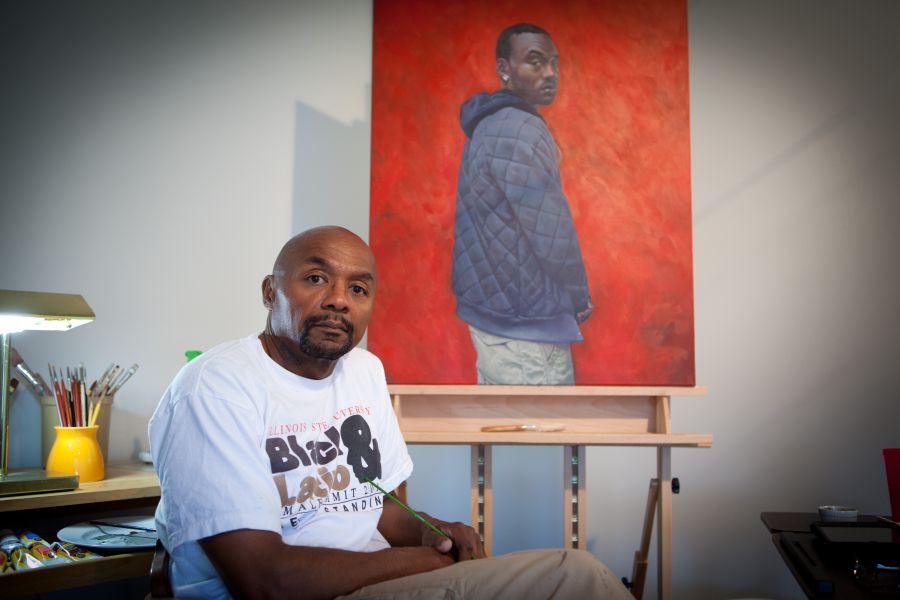“Have you ever observed yourself observing other people? Are there preconceived judgments and assumptions that inform what you see?”
These are just a few of the pointed questions that Associate Dean of Students (and born-again painter) Rick Lewis, M.S. ’87, wants his audience to think about when they view his series of portraits of African-American men.
Lewis plans to complete 20 portraits of 20 young men for an exhibition next year—an ambitious return to painting for the School of Art alumnus. That return (after a 19-year break) was difficult, Lewis said, but the time was crucial to understand his current subject and spark the idea for his series.
“I always knew that African-American males had some unique challenges being on a predominantly white campus,” said Lewis, who joined the ISU staff in 1987. “These ideas were incubating in my head over the last 19 years. I often asked myself what would it look like if I had to illustrate it.”
The portraits may make those with preconceived notions uncomfortable, said Lewis, who aims to multiply that discomfort by filling an entire gallery. The emotional impact of a painting is a powerful tool which Lewis says could serve as a catalyst for challenging those preconceptions and starting meaningful dialogue.
Lewis’ creative process starts by taking a photograph of the person he will be painting, allowing him to paint during his free time. Then he starts the long process of painting in painstaking detail. Depending on his schedule and the subject, a single portrait could take one month or several months.
Each model (mostly students) is asked to wear clothing without brands and symbols, and they’re painted in a natural pose against a neutral background, void of context. By controlling these elements and directing his subjects, Lewis aims to show them in the most natural, unassuming light.
“When a person approaches this artwork, all they have to work with is what they see and the assumptions they bring to it,” Lewis said. “My work is stripped of narratives and visual cues. And then the viewer has to ask themselves, ‘What assumptions am I making about this person based on this limited amount of information I have in front of me? Where did I learn these assumptions? Why am I thinking this?’”
Eye-opening experience
The paintings can spark self-reflection not just among the audience, but the subjects too. Junior anthropology major William Shaw agreed to be painted in part because of the positive dialogue it could generate.
“I thought it would be an excellent idea to create artwork of African-Americans in a spectrum that only portrays the individual and not the attributes of society that have been placed on us,” said Shaw. “I am not a black man who loves rap, smoking, deviance, and grows my hair long because of some fad. I am a man first who just happened to be born black, meaning that my skin will tell you nothing of who I am.
“You must discard your preconceived notions of ‘black’ people, in order to understand the people that lie beyond your misconceptions,” said Shaw.
Lewis finished his painting of Shaw last fall.
“My reaction was that the painting looked like an over-exaggerated version of myself,” Shaw said. “I felt that it showed a false sense of portraying what I physically looked like. But after talking to people who see me on a daily basis, I realized that I had a negative self-image of myself.”
Shaw realized that negative past experiences with people and organizations had an effect on him, but that those experiences didn’t have to define him.
“Mr. Lewis’ painting made me realize that it is time to see myself for what I am (and) could be, and not through the eyes of others who only see my worth in their narrow view of understanding,” Shaw said.
Lewis plans to complete 20 paintings for an exhibit that will include interactive autobiographies for each of the students painted. He hopes to premiere his work next spring.
“I’m an educator,” said Lewis. “Ultimately I want to use this artwork to educate students on differences and acceptance and how to rethink stereotypes.”
Andrew Avitt can be reached at andrew.avitt@gmail.com.


